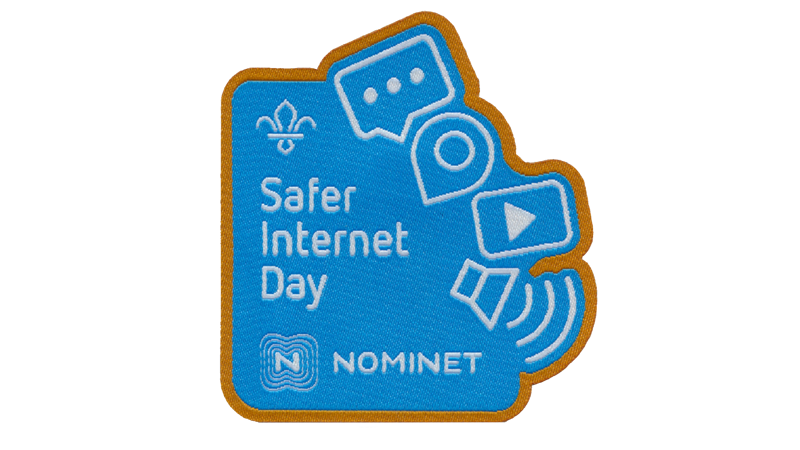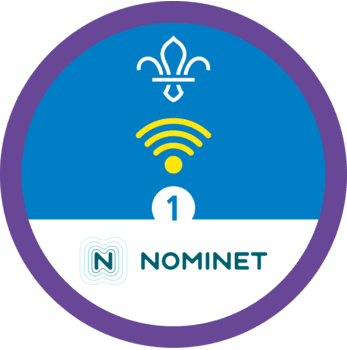
Discover the power of digital persuasion
You’ll need
- Copies of the 'Persuasive design' cards
Before you begin
- Use the safety checklist to help you plan and risk assess your activity. Additional help to carry out your risk assessment, including examples can be found here. Don’t forget to make sure all young people and adults involved in the activity know how to take part safely.
- Make sure you’ll have enough adult helpers. You may need some parents and carers to help if you’re short on helpers.
Planning this activity
- Make sure you’ve printed enough copies of the ‘Persuasive design’ cards for your group, so people can have one full set per pair or small group.
- The cards will need sorting into three piles, which are ‘Technique’ (yellow), ‘Definition’ (green) and ‘Effect’ (pink).
- You may want to have a copy of our online safety tips from Staying safe online to be able to share tips with young people or the people they live with.
Running the activity
- Gather everyone together in a circle and ask people to think about or name what technology they use every day.
- Ask if anyone knows what ‘Persuasive design’ is. Explain that ‘persuasive design’ is when products are planned, made and created by companies to change and influence the users’ thoughts and behaviours.
- Explain that these techniques are frequently implemented on the internet, in apps, and in online or video games. They’re designed to persuade people to give up their time and money. Ask everyone to see if they can think of any examples. Tell everyone that in this activity they’ll explore some examples of these and the different ways our behaviour may be influenced or affected.
- Ask everyone to get into pairs or small groups, depending on how many sets of cards you have.
- Give out a set of both the ‘Technique’ (yellow) cards and ‘Definition’ (green) cards to each pair or group. Ask everyone to spend five minutes trying to match the ‘Technique’ (yellow) cards with the correct ‘Definition’ (green) card.
- When everyone is ready, get back together as a group and read out the answers. You could ask people why they thought a definition matched a technology. Remember to make sure everyone moves the cards so they’re in the correct pairs for the next part of the activity.
-
- Autoplay - When an app or website plays the next video automatically without me pressing ‘play’.
- Clickbait - Anything online that tries to attract my attention and make me click on it (e.g. a dramatic headline).
- Push notifications - An alert from an app on my device telling me to open that app right now.
- A pop-up - When something pops up on my screen (e.g. an advert in a box) trying to get me to click on it.
- Typing indicator - When something appears on an app or game to tell me that someone is typing a message. For example, “Amy is typing...”
- Red notification bubble - A red circle with a number on it, next to an app, showing me that there are notifications to be seen.
- Time limited discounts - When something online tells me that a sale or discount is only available for a short time.
- Streaks - When something online counts how many times I’ve done something for multiple days in a row or rewards me for doing it.
- Save points - When I can only save my game when I reach a certain point, rather than any time during play.
- Loot boxes - A mystery bundle of items in a game that I can win or buy with real money.
- Next, distribute the ‘Effect’ (pink) cards and give one set to each group.
- Now, ask the groups to match the ‘Effect’ (pink) cards to the correct ‘Technique’ and ‘Definition’ pairs you made.
- After around five minutes, or when everyone is ready, gather everyone back together. Again, read out the answers and discuss the connections as a whole group. You can find the answers on this page.
- Ask everyone to think about or discuss with a partner if they’ve ever seen or experienced these persuasive design techniques while being online. They should think about what they saw, what the company or product was, what they were being influenced or persuaded to do, if they did or bought the thing, or if they ignored it. Did they recognise they were being persuaded? For example, they may have bought some tokens on a game, had push notifications pop up on their phone, used a free trial and found it hard to stop, or spent time watching some adverts to get to use a product for free.
- When people have thought about the questions or discussed them with the partner, encourage people to share their thoughts with the group. Ask everyone which techniques they find most persuasive and why.
- Now, ask everyone to think about how we can recognise persuasive design, and how we can help to stop ourselves being influenced by it or negatively affecting them. For example, we could turn off autoplay on YouTube videos or social media videos, mute our push notifications, take breaks from devices, or ask a trusted adult for help when we’re asked to buy something in a game.
- Autoplay - I’m more likely to carry on watching videos if they play automatically.
- Clickbait - A dramatic headline might pull me in and make me want to find out more.
- Push notifications - An alert like this might remind me of a game and persuade me to play it. For example, it might give me a reward if I open the game now.
- A pop-up - It might grab my attention if it appears suddenly on my screen. They can also be quite difficult to remove.
- Typing indicator - This creates suspense and might make me want to find out what their message is going to be.
- Red notification bubble - The colour red might catch my eye and make the notification seem urgent – I might feel like I have to open it.
- Time limited discounts - This might persuade me to buy something right away so that I don’t miss out on the deal.
- Streaks - This might persuade me to keep opening a game or app so that I don’t break the streak.
- Save points - This might persuade me to keep playing so that I don’t lose my progress.
- Loot boxes - I might feel excited about opening one of these as I don’t know what I’ll get. It might be something really cool!
Reflection
This activity was all about persuasive design. We found out about how technology has been made to influence or deceive us into buying or accessing a product.
Let’s think about persuasive design. Can you remember what it is? Did you know about it or had you recognised it before, even if you may not have known that it was called persuasive design? What are the impacts it can have? Why do you think things have been designed in that way?
Persuasive design has negative side effects, but it can also be positive and useful. Do you think there are any benefits or uses to it - what are the positives of persuasion design? For example, auto play is convenient and push notifications mean you don’t miss any messages.
Let’s think about lots of technologies. What do you think the good things about all the different technologies are? And, apart from persuasive design, what are the other negative side effects using technology or technology can have? Some examples are peer pressure from social media, being misled about who you’re talking to, scams and fake news.
Think about what technology or digital platforms you use, how you use them and what you use them for. How does it make you feel? How does it affect you? How do you make sure you use it in a healthy way? Do you know what to do if something online or when using technology makes you feel upset, scared, unsure or uncomfortable? Does everyone have the same level of knowledge about technology? How could we help people to know about persuasive design and using technology in a healthy way? Can any think of their top 5 tips they’d tell someone, such as taking regular breaks?
Safety
All activities must be safely managed. You must complete a thorough risk assessment and take appropriate steps to reduce risk. Use the safety checklist to help you plan and risk assess your activity. Always get approval for the activity, and have suitable supervision and an InTouch process.
- To make this activity easier, you could do the activity as one big group, rather than in pairs or small teams. You could also make the small groups bigger to offer more support or assign a young leader to support some groups who may need extra help.
- To make it harder, you could offer less direction in the discussions and make it more youth-led.
- Some people may need larger photos or cards, such as if they have a visual impairment. You could make the images or cards larger and use light coloured paper, such as white, to make them easier to read. You could also read out each card to the group.
- Remember, not all young people will have the same experience, access or knowledge when it comes to technology. Each person’s grown ups may also have different rules around their young person’s use of technology. Make sure to check that everyone understands what everything means and what everything is.
All Scout activities should be inclusive and accessible.
You could ask people to keep a diary over a week and make a note of any examples of persuasive design techniques that they see when using their devices. You could review these diaries at a later session.
You could also make posters or leaflets to raise awareness of persuasive design, such as telling younger people how to turn off push notifications on games and apps.
Take a look at our digital safety advice for young people and our other online safety activities with Nominet. Consider rewarding the group with the blanket badge.
Young people could think of their own examples and create their own set of cards for these.
